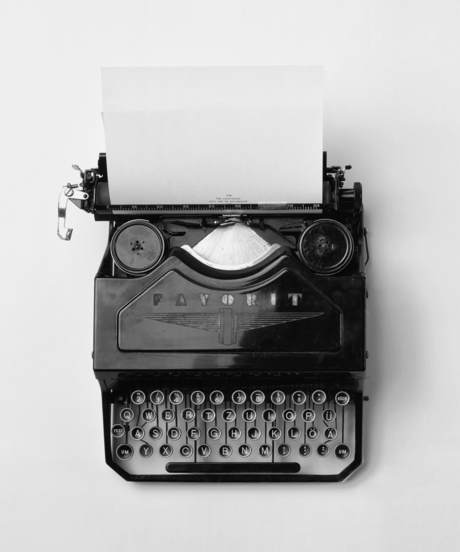Not until I was recently shown around the Palestinian West Bank, including several villages west of Ramallah at the forefront of resistance to Israeli seizure of land, did I realize how the settlements, walls, roadblocks and separating roads intrude everywhere and dominate the landscape. I now find it hard to believe that the government of Israel is serious when it talks of wanting an independent Palestinian state. These physical barriers will obstruct the very creation of a Palestinian state.
But if the instruments of Israeli domination and expansion were more oppressive than expected, so too I found the range of Palestinian non-violent activity against that occupation to be larger, and richer in creativity, than I had imagined.
As Ethan Bronner wrote in the New York Times (6 April 2010): ‘Something is stirring in the West Bank. With both diplomacy and armed struggle out of favour for having failed,.. the Fatah-dominated Palestinian Authority, joined by the business community, is trying to forge a third way: to build a virtual state and body politic through acts of popular resistance… while avoiding violence.’
My host in the West Bank, Dr Mustafa Barghouthi, is at the forefront of such efforts as Secretary-General of the Palestinian National Initiative and as one who has spent years strengthening Palestinian civil society through educational and public health programs.
Like Dr Barghouthi, many Palestinians I met seem to hold two weapons in their hands – in one hand the weapon of non-violent resistance and in the other the weapon of constructive work.
But equally, as we know, there are many Israeli peace-activists and campaigners – again, more than we imagine – who have embraced non-violent resistance, even risking imprisonment for the cause of peace, and in support of Palestinian self-determination.
On Easter Sunday I prayed silently in two sacred places – the grave of Abraham and the Church of the Nativity in Bethlehem – for the liberation of Palestine and for the well-being of my Jewish friends in Israel and around the world, especially in the USA.
As I told President Shimon Peres, when he graciously received me in his home in West Jerusalem, the recovery after the Holocaust of the Jewish people is one of the most stirring chapters in the story of humankind. Yet (I added) I pray for another chapter in that story: a chapter where justice is provided to the Palestinians.
Justice is at the very heart of Judaism. International pressure on the Israeli government to move towards a peace settlement is, by itself, not enough. The international community must go further, to rouse Judaism’s conscience in pursuit of that justice which is etched in the very character of being Jewish – forged not only from their two millennia experience of being victims of injustice, but from their ancient roots in the Jewish faith.
‘Let justice flow like a mighty river,’ thundered the Jewish prophet, Amos, 2800 years ago, on the same patch of dirt where Palestinians and Israelis exchange bombs and bullets for justice today. But then Amos added, ‘and righteousness as a never-ending stream.’
No river exists without streams which feed it. Justice today, as in Amos’ time, needs streams of the right honest response of self-examination to sustain it. ‘Turning the searchlight inwards,’ as my grandfather the Mahatma would say, and as Initiatives of Change seeks to underline.
When given primacy in our hearts, the inner voice of truth prompts within our innermost motives – whether we are Hindu, Jew, Muslim, Christian, Buddhist, of another faith or simply human – the virtue of mercy. Millions of Muslims pray many times a day in the name of Allah ‘the most merciful’. Very simply, it is the only cure for hatred without which the tide of violence cannot be turned within this ancient conflict. It is the intelligent statesmanship, demonstrated within our living memories, through the non-hating leadership of Gandhi and Mandela. And it is surely no less possible in the Middle East than it was for India or South Africa.
I came to the Middle East from South Africa, with Mandela’s words ringing in my ears: that the liberation of South Africa is incomplete without the liberation of Palestine. I would say the same about the liberation of India and Pakistan.
The Soviet Union crumbled, apartheid in South Africa crumbled. So too will crumble the occupation of Palestine, as also the threat to Israel’s peaceful existence – but not without this intelligent statesmanship which can transcend hatreds and fear, and which, cutting through self-righteousness, ‘turns the searchlight’ on our own motives, behaviours and political intrigues, bringing that unique quality of mercy.
Could non-violence yet provide a third way between Israel and Palestine? Mahatma Gandhi held that non-violent satyagraha (truth force) ‘seeks to liquidate antagonisms but not the antagonists’. He often claimed that non-violence took courage, a willingness to suffer. Those prepared to kill a man or to die for their cause, he maintained, could become practitioners of non-violence.
Whether in passionate youths of the intifada or Israeli veterans of multiple wars or in mothers stoically sacrificing their sons for a greater cause or in young men in body armour at checkpoints, the Middle East perhaps has a greater accumulation of suffering and courage than anywhere else on earth.
My yearning is for that capacity to produce a new outbreak of non-violence in the Middle East and a pathway to durable peace.
The writer, a grandson of Mahatma Gandhi and research professor at the University of Illinois at Urbana-Champaign, was on tour as president of Initiatives of Change International.
English

